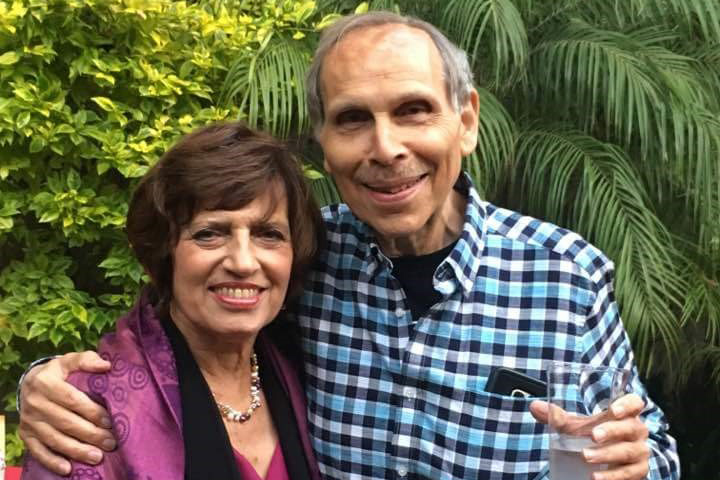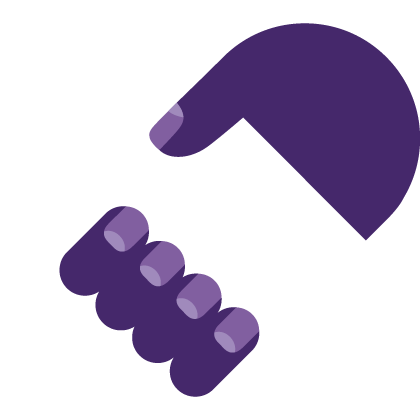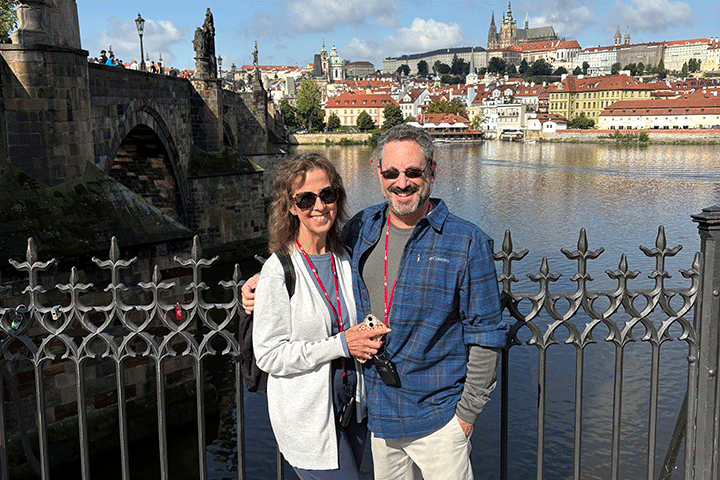Luck, Grit, and Support

- Medical “quarterback” helps guide us through choosing doctors and treatments
- Chemotherapy and SBRT to shrink the tumor
- Combined NanoKnife and Whipple procedures
In the Fall of 2015 I started experiencing middle back pains.
I was a retired academic, 75 years old and in good health. My x-rays and ultrasound were inconclusive, but blood work indicated that my level of lipase, a pancreatic enzyme, was off the charts. That result scared me into thinking that I had cancer, and I requested that my family doctor refer me to the Princess Margaret Hospital (PMH), Canada’s foremost cancer center.
A CT scan was inconclusive but a January 2016 MRI indicated I had stage III locally advanced pancreatic cancer. The tumor was located in the head of the pancreas, and there were cancer cells wrapped around the superior mesenteric artery (SMA). I was informed that the only treatments available were chemotherapy and radiation but there was no procedure in Canada for removing the SMA tumor. A biopsy confirmed the MRI results and a port was inserted for chemo treatments and blood work.
Luck Was On My Side
I was lucky to be diagnosed earlier than most patients. My luck improved and the course of my treatment changed when a niece informed us about her husband’s uncle, a medical oncologist specializing in pancreatic cancer at Columbia/Presbyterian Hospital in NYC. He gave me information about the NanoKnife procedure, also known as irreversible electroporation (IRE). A doctor places electrodes around the tumor and an electric current is circulated between the electrodes and causes the cells between the electrodes to die.
Her uncle recommended that I consult with Dr. John Chabot, a renowned expert in both the NanoKnife and Whipple procedures, and the Director of the Pancreas Center at New York-Presbyterian Hospital. To this day, I refer to my niece’s uncle as my Columbia quarterback, a necessary partner in fighting a major illness.
My Various Treatments
Because of my Ashkenazi Jewish background, I was tested for the BRCA gene mutation as well as for other pancreatic cancer markers; the results for all were negative. Blood work indicated that I did not secrete CA 19-9, the pancreatic tumor marker. So CT scans were the only method for delineating tumor life.
My treatment started with four sessions of FOLFIRINOX chemotherapy, delivered over a three-day period every two weeks. After my first session, I was rushed to ER because of excessive nausea and vomiting. My anti-nausea medication was changed and the chemo formula was tweaked. My white blood count was compromised and my Columbia quarterback suggested using Neulasta, a white blood count booster.
It was clear that I had to leave Canada if I was to receive treatment beyond chemo and radiation. Following my eight chemo sessions, I took my latest CT scan results and flew to New York City on May 25, 2016 for a consultation with Dr. Chabot. He diagnosed that my tumor had shrunk by twenty percent and recommended that, before surgery, I undergo stereotactic body radiation therapy (SBRT). During July, I received three sessions of SBRT with Dr. Yee Ung at the Odette Cancer Centre at Sunnybrook Hospital. On August 26, I underwent surgery at Columbia/Presbyterian for the combined procedures of NanoKnife and Whipple.
Following surgery, the pathologist’s report determined that I was cancer-free at the margins and accompanying lymph nodes. Since my surgery, I had four CT scans at PMH, all determining that I was still cancer-free at the margins and lymph nodes.
I am grateful for the wonderful care I received in Canada, both at PMH and at Sunnybrook. As they say, the care was “priceless.” It’s unfortunate that I had to go out-of-country to become cancer-free—I fell between the cracks in an otherwise excellent health care system. Fortunately, there are changes in the air: a trial using the NanoKnife procedure for pancreatic cancer began at Toronto General Hospital in September 2017.
Side Effects of My Treatments
I had some of the standard side effects from my treatments. The most notable is peripheral neuropathy in my hands as a result of the chemo sessions. Because of loss of appetite after surgeries, my weight went down to 150 lbs. I consulted with a nutritionist who helped me with diet suggestions and supplements to counter cancer and osteoporosis.
Because of continuing stomach issues, I have been consulting with an empathetic gastroenterologist, Dr. Young-in Kim. I can’t say enough about Dr. Valerie Ha, my wonderful family doctor who stays on top of all my medical needs as my Toronto quarterback. Fortunately, I have gained 15 lbs. in the last three months. Now I have to watch my cheddar cheese and ice cream intake.
My Formula for Others
- A skilled cadre of medical practitioners, especially someone like Dr. Chabot, a world-class surgeon and individual.
- A health professional “quarterback” to help you through the complexities of the medical world.
- An incredible partner like my wife, who served as caregiver, researcher, constant companion, and supporter.
- Other supporters such as daughter Samantha and son Lindsay; our good friends Linda, Lloyd, and Elaine who drove us to chemo sessions and buoyed my spirits; and cousins Patti and Mike who hosted us during convalescence.
- An extensive online support group that I cultivated with over 60 family members and friends that I gave timely updates on my condition, and received wonderfully hopeful responses.
- A willingness to help other pancreatic cancer patients with my story and advice from my experience.
- An aggressive will to live, keeping one’s sense of humor, sometimes willing to challenge the medical professionals. With respect to the Monopoly board game, my chemo mantra was: “Chemo, go directly to the pancreas, do not stop at GO, do not collect $200, and do not make any side trips.”
Joel tells his story in “Whatever It Takes To Get Through This.”






